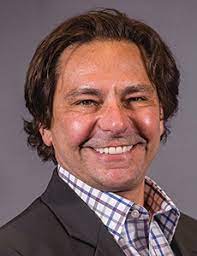The story begins with the interconnection of exposures, hazards, perils and losses. The world is in many ways smaller than it’s ever been and COVID-19 and supply chain disruptions are vivid examples of our joint vulnerabilities. The latest worldwide calamity is the inflation cycle, which is not unknown to third world and emerging economies but hasn’t been experienced by developed counties since the 80’s. Yet, here we are sharing a rising rate of inflation that shifts from one commodity to the next. These events challenge the insurance and reinsurance community as they grapple with having enough capital to pay losses and meet the needs of an expanding global economy.
Now let’s bring the discussion closer to home and specifically to how it impacts the public sector in the US. First, despite alternative risk techniques such as self-insurance and pooling we are still dependent on financing by a robust insurance industry. A business that is well capitalized but stretched to the limit. The pain is not unknown to public agencies as property losses know no boundary nor region. This is not your grandparent’s earthquake and flood events. We now have so many new terms for large scale property events they have their own language: bomb cyclones, atmospheric rivers are part of our lexicon. Hail the size of a Buick falls in Colorado and Texas freezes more than Iceland and on a far larger scale. The insurance industry refers to these as secondary perils, meaning NOT earthquake or hurricane. Secondary also means these events are random, unexpected and without precedent... other than they happen all the time.
Then there’s the liability situation which is reminiscent of the “wild eighties” when products liability and medical malpractice claims were the rage. The tidal wave of these claims and their ever growing impact was blunted by an insurance crisis and tort reform. The memory of these lessons has long been forgotten and the law schools are pouring out new graduates all looking to sue someone, anyone. If it wasn’t for personal injury attorneys advertising on TV and radio, there would be nothing to watch or listen to. Those newly graduated, wet behind the ear lawyers have a new tool in their arsenal and it’s called litigation funding. The way it works is investors back their efforts by paying their bills in the hope they will share the proceeds of the case. Litigation funding was once an informal affair with friendly investors but is now a sophisticated exchange of law firms and hedge funds with billions of dollars in the mix. This toxic mix of too many attorneys, advertising and litigation funding has fueled a new phenomenon referred to as social inflation. Essentially, social inflation is the cost of a society that has zero tolerance for certain types of offences such as sexual abuse, employment matters and anything to do with law enforcement.
I have already referred to earlier hard markets as a way to compare where we are today with earlier crisis. The hard markets of the 70’s. 80’s and even 2000 were worse and involved all lines of coverage indiscriminately. Not so in 2023, we have a very strong and stable workers’ compensation market. And, praise be that we do, as workers’ compensation is by dollar amount our largest spend as a percentage of property & casualty insurance.
*The views and opinions expressed in the Public Risk Management Association (PRIMA) blogs are those of each respective author. The views and opinions do not necessarily reflect the official policy or position of PRIMA.*

By: John Chino, ARM-E, ARM-P, CSRM
Area Senior Vice President, Arthur J. Gallagher & Co.
John is enjoyed 40 years in the industry, all with Gallagher and has spent nearly his entire career in the public sector. He currently serves self-insured pools and large sophisticated self-insured public agencies. In addition, he is on the advisory board for the USC Risk Management Minor Program and frequently serves as a guest lecturer. John is a member of the faculty of the National Alliance of Insurance Education and Research where he teaches the Certified Scholastic Risk Management Program (CSRM). He is a course instructor for The Institutes and helps students to pass ARM exams.



